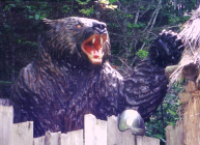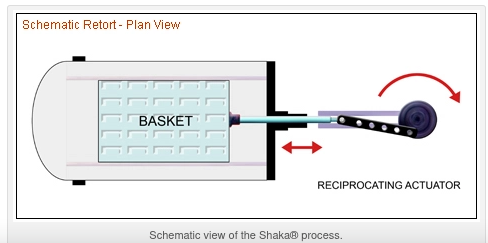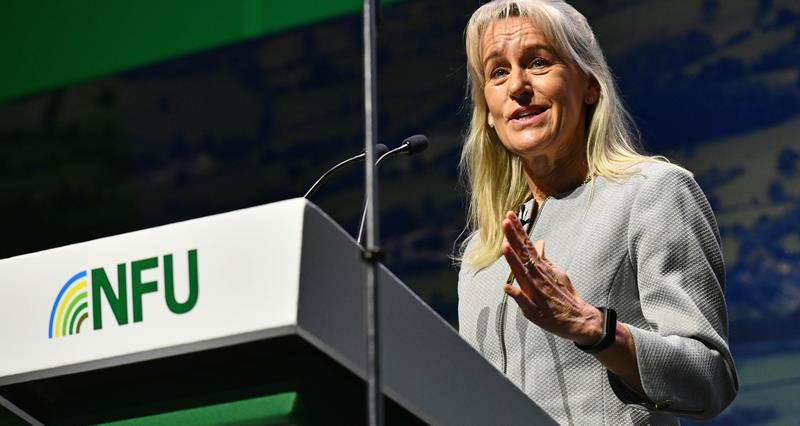Britain’s busiest ferry port faces the risk of bankruptcy following Westminster’s decision to retract millions of pounds in funding for swine fever checks on pigs arriving at the port of Dover. The money has already been spent during the financial years for which it was allocated. The local council meets tonight (Monday February 5) to plan for the coming months, when food testing will be rolled out further.
A third of Dover District Council’s budget is diverted from local government to funding food safety checks at the UK’s largest passenger and freight terminal. In June, this figure will rise to nearly half. Dover handles up to 120 ship movements a day at peak periods and moves a third of the UK’s food imports.
The harbour is run by an independent trust, set up by an act of parliament and given the task of managing the busiest ferry port in the UK. Since the legal requirements are set by national laws, Dover has no choice but to comply. The district council is run by a Labour group with a majority of one elected in May last year. The harbour’s independent status means that theoretically it can set whatever prices it needs for its services to pay their way. The reality is not that simple
The real retail equation

This evening I watched the Channel 5 documentary Aldi vs Lidl: Supermarket Wars. The program makers correctly identified the standard set of superficial differences that are plain for all to see. However, while setting out to explain the yawning gap between UK and Continental business models, the detail was a bit sparse. For instance, consumer journalist Harry Wallop does his bit to keep alive the 1966 World Cup mindset, evoking a long departed anachronism rather than twenty first century marketing.
The programme’s narrative starts in the 1990s and portrays the discounters as eccentric oddballs with a business model that worked in Germany but needed tweaking for more lavish UK mindsets. British food retailers had established a stranglehold on the postwar consumer economy and raked off substantial sums of cash from suppliers, known as shelf money, hello money, listing fees, the list was endless. Large retail businesses expected to be paid GBP 5,000 a year per Stock Keeping Unit (SKU) to be listed at 200-300 stores. Example: food manufacturer presents a family of six snack products in the early 1990s and would be asked to stump up thirty thousand quid for listings in up to 300 stores. Any subsequent special offers were funded by suppliers, in the form of free product (physical stock); or credit notes or deductions from existing/current invoices.
Given that even a modest hypermarket would stock 25,000 to 30,000 SKUs in those days, the retailers were making lorryloads of money while pretending to be church mice earning a miserable 4% profit on return. The arrival of the German discounters threatened to blow their cover and the major multiples were not keen on this. The reason Aldi and Lidl could run rings round the big four within a few years of arriving was that the discounters only ever discussed prices with suppliers and never asked for shelf money. Carving out a substantial market presence without constantly squeezing suppliers, the discounters have demonstrated that it can be done and done honestly. That spooked the multiples even more.
Footnote: At the time of writing, continental retailer Carrefour is playing the commercial equivalent of Russian roulette with snacks and soda giant Pepsico. Initially limited to France, Carrefour stores across Germany, Italy and Spain are now all locked in to a life and death fight over trading terms (shelf money). Even if Carrefour dumps Pepsico (unlikely) there is no way that the tonnages of product could be secured from other manufacturers. Also in France, the eponymous independents’ chain E Leclerc is reading the riot act to its suppliers. Running a tighter ship than BlueBeard, second generation chief executive Michel-Edouard is threatening hellfire and brimstone for all those who challenge his figures. For years now, the group has only ever paid for one tonne of potatoes out of every 1.2 tonnes delivered, insisting that there is a lot of slack (waste) with this crop. This is simply not true: any fresh produce department anywhere in Europe that is experiencing more than 2.5% slack across a week would be hauled over the coals.
245% duty shock for UK cheese
British cheese exports to Canada will face duty of 245% next year, once the third country duty-free quota is exhausted. Some 95% of this quota is already taken by products arriving from Norway and Switzerland, leaving very little for shipments to any other third country.
This slap in the face for British cheesemakers comes as Canadian negotiators came amid talks on the implementation of the much-vaunted bilateral trade deal. Refusing to roll over previous extensions to zero percent duty available under former EU terms, the so-called cheese letters, the decision vapourises pre-Brexit claims of extensive growth in UK food exports. These will in fact be treated like any other third country products, in the absence from specific terms agreed during the framework negotiations. Last year, the UK exported cheese worth nearly GBP 19 million to Canada.
Growing concern
Hundreds of acres of cultivable farmland will be cleared to make way for houses as far as the eye can see. In the coming months, Mid Sussex District Council will hear applications from developers wanting to build 1500 houses between the villages of Ansty and Cuckfield. As well as residential properties, there will be shops and amenities in addition to a headline-grabbing 30% allocation of social housing. Whether or not the developments will ever release as much as 30% for social housing remains to be seen, but it needs to be there at the outset..
This major development plan faces problems, however. To begin with the new homes will generate additional demand for water in a part of the world where demand for water is already comparabl;e to desert regions.The loss of 250 acres of farmland is nothing short of disastrous: the UK cannot afford to throw away productive land.
Global factors keep pushing up UK food prices
Over the past two years, climate change and rising energy costs have been the two biggest sources of food price rises. Analysis by The Energy and Climate Intelligence Unit (ECIU) suggests that even if energy costs ease, climate change will carry on pushing up food prices in years to come. With hundreds of acres of UK farmland covered with floodwater as I write, the water levels will lead to lost crops, forcing farmers to write off produce that would otherwise have counted towards the UK’s economic activity. Replacements will be required for the lost stock, which may need to be imported,
Climate change cost UK consumers an extra GBP 171 in 2022, rising to GBP 192 this year. While the ECIU expects energy price rise to ease in years to come, the think tank still reckons that households have had to find just over GBP 600 for environment-related price drivers in 2022 and 2023. Dr Tim Lloyd, at Bournemouth University, argues that energy pricing is behind 59% of all UK food price rises. All over the world, drought and heatwaves are affecting basic commodities such as olive oil, canned tomatoes, sugar and rice. Food prices are rising everywhere: this is inevitable, given the way food is traded.
Fast forward to 2024 and UK voters go to the polls. Next year, six years later than promised, the UK government is promising to phase in the plant and animal checks that were a part of the EU border control infrastructure. This inspection activity does not come cheap and will be added on to the cost of importing food. Just when consumers thought things were settling down, they can look forward to an unexpected surge in the cost of imported food.
Late, random and arbitrary
One of the most frequent arguments trotted out for Brexit was that it was time to take back control of international borders. The ‘take back control’ mantra was somehow an irrefutable justification when all else fails. It remains more of a fig leaf than a reasoned argument.
Having regained third country status to make this dream come true, the UK has obtusely dragged its feet over implementing the veterinary aspects of border control. The simple truth is that the commitments which come with international borders were not in fact a top priority for British politicians. There has been little political appetite to ensure full compliance with post-Brexit structures from day one, possibly because the necessary skill sets are in short supply.
The declaration of a 10km Temporary Control Area for blue tongue around a dairy farm in Kent came as a wake-up call the UK government. It was as if Westminster was caught out taking a calculated risk that there might not be any significant animal health issues. There may not be a serious risk of the notifiable disease spreading, the real problem is the political fallout from gaps in the UK’s veterinary provision under international animal health treaties.
This autumn has seen the implem entation of the first phase of the UK government’s Target Operating Model (TOM), marking greater reliance on digitised documentation and a move away from visual inspections. If all goes according to plan, the next twelve months will see the implementation of sanitary inspections by customs staff. The laboratory and testing fees will be charged to the owners of the goods concerned,. The additional costs will be significant but randomised. The testing will have an inflationary effect, but this will neither be directly attruibutable nor constant. It will b e impossible to predict reliably, but will generate resentment.
Coincidental good fortune

A recurring theme in Chris Packham’s series Earth is the timely coincidences that came with planetary events. Having just re-watched the third of the five part series, it is striking how the twin-track development of what later evolved into plants depended on some shared resources with what later became fungi. The proto-fungi extracted minerals from bare rock that nourished evolving plants, while the early plants gave glucose to their fungal partners. Without this leap in evolution, we would not exist today.
Unbearable pressure
Town dwellers in Japan have faced a rising tide of attacks from black bears, which are driven by a lack of food to venture into what were previously uncontested spaces. A story in The Guardian puts the number of casualties since April at 158 as well as two lost lives. Unlike the United States, where black bears are a constant risk for human misadventure, there is strong evidence to suggest that the bears are being driven by disruption to their normal food supplies rather than selecting centres of human activity as easy pickings for a quick meal.

Human fatalities arising from attacks by bears have figured in Japanese history for years. The museum reconstruction of the Sankebetsu episode on Hokkaido in the early twentieth century is pictured here. It came about after human incursions into virgin jungle. A conflict of interest with the formerly unchallenged top species was resolved on human terms. The current spate of bear attacks has broken a previous record high recorded in 2020, with many incidents being logged in Honshu, the largest island in Japan.
Unofficial estimates of Japan’s bear population range up at 44,000, nearly three times the 15,000 recorded officially in 2012. Without a corresponding increase in territory and food sources, there is no avoiding a state of constant conflict between species.
Autoclaves and retorts
Autoclave and retort are two names for pressure cooking vessels used in food manufacturing to sterilise canned food and in later versions by engineering firms to cure rubber tyres. The starting point was known as a steam digester, attributed to French scientist Denis Papin, in 1679.

The hazards of working with steam under pressure very quickly became apparent and Papin devised a safety valve to mitigate the risk of explosion, leading many to refer to it as the Papin digester. It was called a digester because it was generally used to apply heat and pressure to bones, leaving cooked bones soft and friable for bonemeal. Other processes were developed for this piece of equipment, from which Papin developed a prototype steam engine. This was subsequently developed into the static steam engines built by Thomas Newcomen.
Chevalier-Appert, a nephew of Nicolas, invented the first reliable pressure gauge for retorts and autoclaves in 1852. This was an essential accessory to prevent explosions and standardise the process. Early retorts comprised a steel vessel, with a metal basket to hold filled bottles or cans. Later versions were fitted with systems that allowed product to be rotated as it cooked, reducing the cooking time. To start a cooking cycle, the vessel is loaded and the door closed. Steam is brought into the cooking chamber and the contents cooked for the required time at the necessary temperature. Once cooked, the steam was turned off and the retort allowed to cool.
A cooking cycle can last for hours, not finishing until the centre of the load had been subjected to a predetermined temperature and for a set period of time. The result is overcooked product on the outside to be sure that the centre cooked properly. Later refinements include automated loading, a key advance to raising throughput.

The next milestone, in the late twentieth century, was reached by Richard Walden, a process engineer working for Carnaud-Metalbox. Convinced that it was time to make retorts more efficient, he devised what is now referred to as the Shaka retort, which shakes its load backwards and forwards, driven by a reciprocating actuator at speeds of more than 100 cycles per minute.

It was clear from the outset that when the prototype reached a certain speed, the load underwent a quantum cooking effect, a “sonic boom” for food, so to speak. Depending on the consistency of the product, cooking time went down dramatically. Further details are available here: https://shakaprocess.wordpress.com/what-is-the-shaka-process/
Walden fixed the amplitude on the prototype at around 150mm and varied the speed or rpm on reciprocating arm. For any given product viscosity, Walden could identify a threshold at which a quantum heat transfer took place in the cooking vessel. Further increases in the rpm had no significant effect on cooking times.

Shaka is an undisputed milestone achievement, but has yet to persuade mainstream food manufacturers to scale down their investments in energy-hungry retort lines. The technology has been licensed to two retort manufacturers, Steriflow in France and Allpax in the USA. Prototype, pilot and production models are all available. Although the Shaka units are smaller than their conventional counterparts, they can achieve the same throughput with multiple shorter cooking cycles.
Worst of both worlds for UK farmers
UK farmers exporting to Europe have faced the full cost of third country status from the start, while EU exporters of animal products to the UK have effectively had a free ride in the absence of routine food safety checks on animal products arriving in the UK.
“For the past three years, our farmers have faced the full reach of EU controls on our exports while the EU has enjoyed continued easy access to the UK marketplace,” NFU president Minette Batters told Urban Food Chains. “This is not just an issue for competitiveness, with British farmers faced with additional costs and paperwork, but also for our nation’s biosecurity.”

“Proportionate and effective controls are necessary if we are to prevent outbreaks of pests and diseases that threaten human, animal and plant health, the safety, quality and biosecurity of our food products and the confidence of our trading partners.”
More detail on this paradox can be found here.
“It is vital that the government uses the latest delay wisely to raise awareness among EU exporters and to address the concerns expressed by many in the supply chain. This includes horticulture growers who continue to see the shift of controls away from their business premises to border control posts as a major point of jeopardy, with unknown costs and heightened biosecurity risks. This time should also be used to minimise unnecessary delays at the border once the new system is finally up and running.”